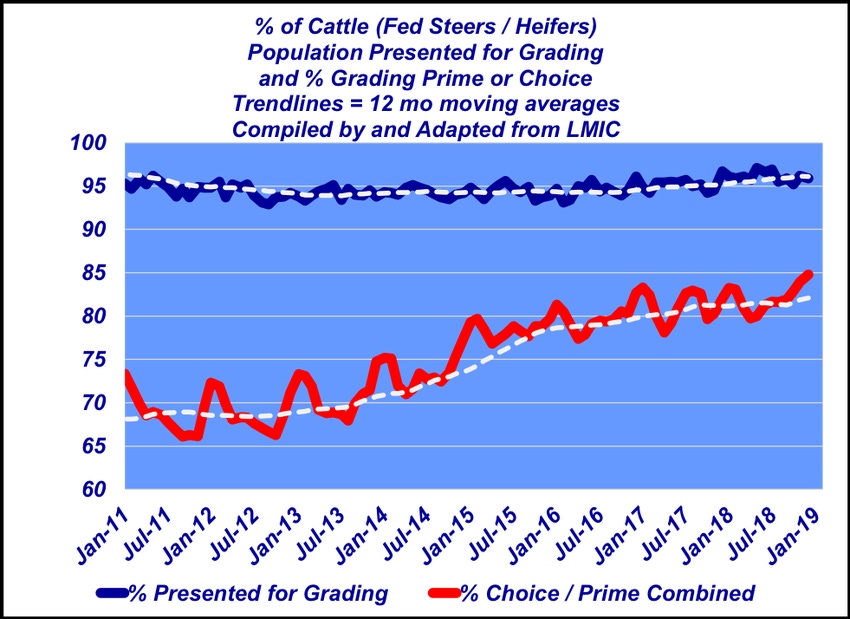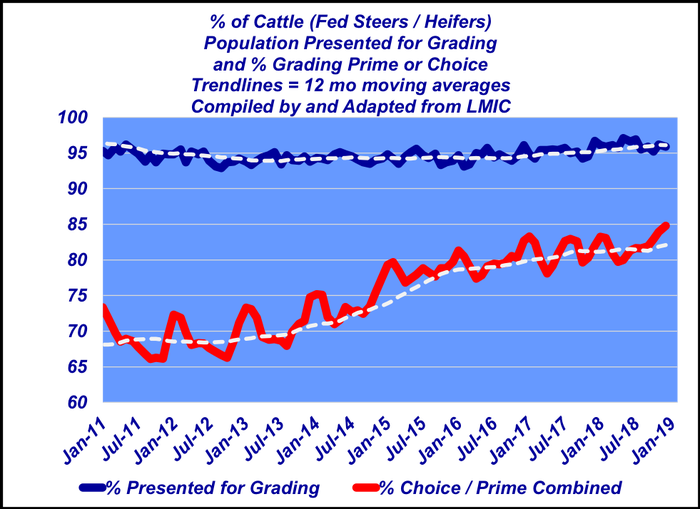A glance at grading trends: Quality rules the cooler
Despite rough weather, carcass quality grades show how well and how quickly beef producers have responded to consumer demands.
April 17, 2019

Quality grading has been nothing short of phenomenal thus far in 2019. That’s somewhat surprising given the harsh weather and pen conditions during the past several months. Nevertheless, in the middle of March the percentage of Prime surpassed 10% of the total slaughter mix. That’s an extra 1.5% versus this time last year.
Better yet, this year’s pace is double versus just four years ago in March. In other words, just since 2015, the beef industry has doubled its output of Prime while also ramping up total weekly production by over 60 million pounds. That’s a significant accomplishment in a very short period of time!
To that end, one reader asked about the slaughter mix and the proportion that gets quality graded. In other words, is the reported percentage of Prime and Choice increasing simply because fewer carcasses are actually being presented to USDA graders? If that’s the case, the industry isn’t really improving - the improvement is just an artifact of a smaller mix that’s being graded.

This week’s graph addresses that question. The data represent both the percentage of cattle being graded and the cumulative percentage of Choice and Prime within the mix.
The proportion of the slaughter mix being assigned a USDA quality grade has remained fairly steady at just slightly above 95%. Meanwhile, the share of Prime and Choice carcasses continues to climb, with the 12-month moving average now above 80%.
All that underscores the significance of grading improvements over time – it’s truly an industry-wide achievement. Clearly, that’s an important trend solidifying beef demand in recent years.
Speer serves as an industry consultant and is based in Bowling Green, Ky. Contact him at [email protected]
About the Author(s)
You May Also Like




.png?width=300&auto=webp&quality=80&disable=upscale)
